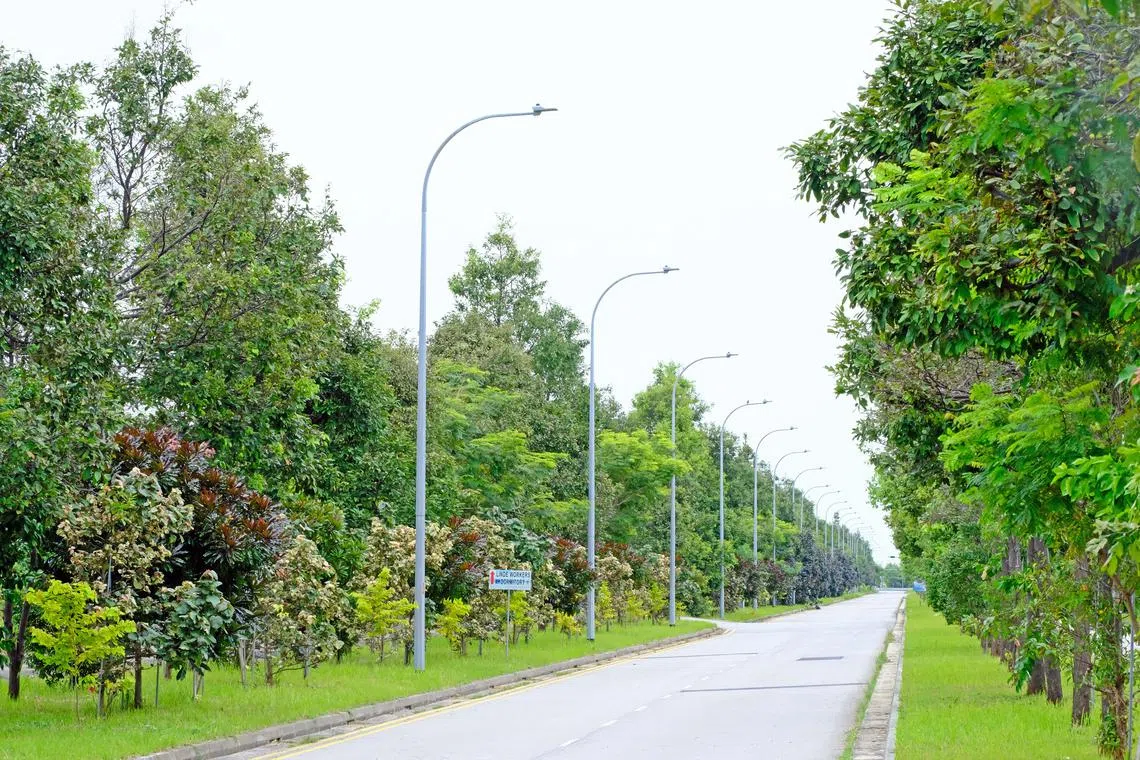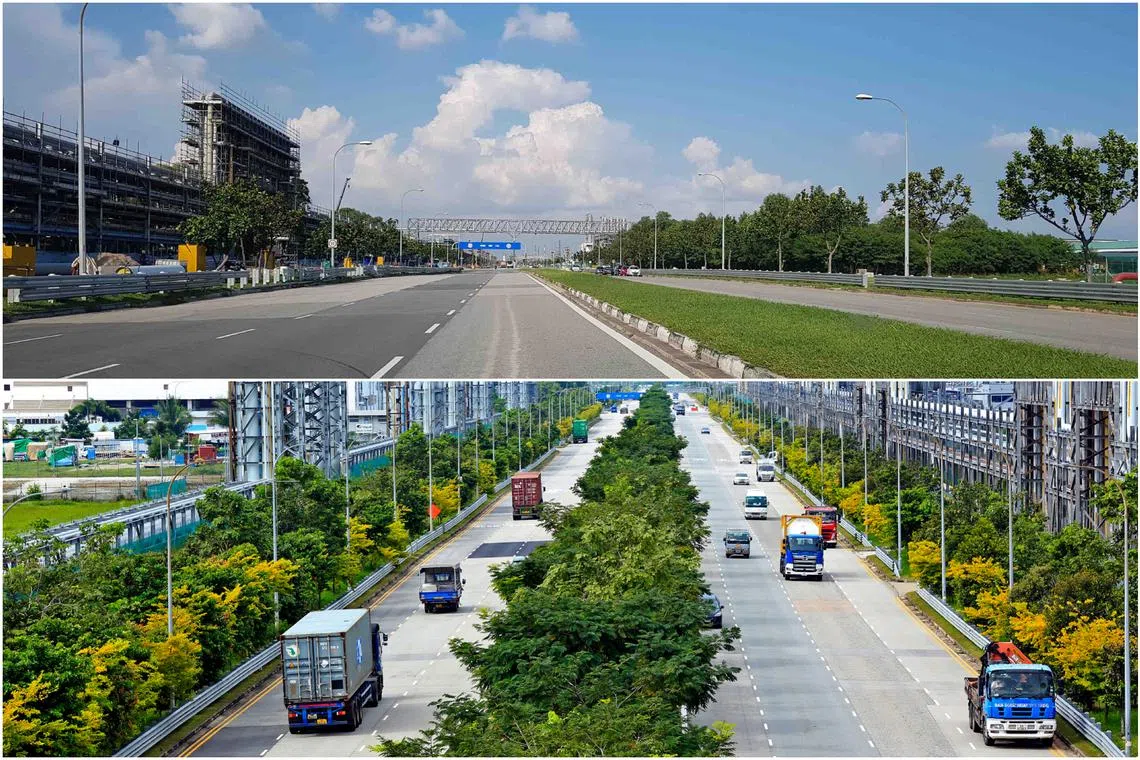34,000 trees planted on Jurong Island, increasing the number by four times since 2019
Sign up now: Get ST's newsletters delivered to your inbox

Trees planted in a multi-tiered manner along Meranti Avenue on Jurong Island.
PHOTO: NPARKS
Follow topic:
SINGAPORE - Jurong Island is looking greener than ever, with the addition of 34,000 trees since 2020.
The number of trees on the island has quadrupled to 44,000 in April 2023 from 10,000 in 2019.
This comes after the conclusion of a three-year greening project
The project, which was announced at end-2019,
NParks had said at the time that the additional greenery should help cool temperatures on the man-made island off the south-western coast of Singapore that is currently home to more than 100 chemical and energy companies.
The greenery would also benefit the ecosystem and enhance the attractiveness of working on Jurong Island, it added.
More than 70 businesses on Jurong Island donated over $760,000 to help fund the initiative – the largest single contributor was ExxonMobil, which donated $120,000.
Meanwhile, the Association of Process Industry – comprising mainly small and medium-sized enterprises – and its members raised more than $160,000.
More than 80 new species of trees were chosen to line the island based on their ability to tolerate drought, their aesthetics and how much shade they provide. They were also chosen for their ability to support the biodiversity in the area, such as attracting butterflies and birds.
For example, flora such as the Golden Senna plant and Peacock Flower plant have helped to lure 12 new species of butterflies since 2020 to the man-made island.
The trees are also planted in a multi-tiered manner, with plants of different heights to create layers, replicating how forests look.

Banyan Avenue in 2018 (top) and in 2022 (bottom).
PHOTOS: NPARKS
This will also help to cool down the island – which is in one of the hotter areas in Singapore – by reducing the urban heat island effect, a phenomenon whereby densely built areas experience higher air temperatures than undeveloped rural areas.
According to studies done by NParks, the multi-tiered way of planting can reduce surface temperatures by up to 6 deg C.
Ms Cindy Koh, director of energy and chemicals at JTC, said: “As a leading energy and petrochemicals hub, Jurong Island is at the epicentre of Singapore’s effort to achieve its climate goals.
“We are pleased to work with companies on Jurong Island to capture opportunities to transform Jurong Island into a more sustainable energy and chemicals park, in line with the Singapore Green Plan 2030.”

Jurong Island Highway in 2018 (top) and in 2022 (bottom).
PHOTOS: NPARKS
Besides this tree-planting project, other sustainable projects among the Jurong Island community include the use of solar panels, she added.
In January, it was announced that JTC would increase the potential for Jurong Island to harvest energy from the sun eightfold, with the launch of a tender to install solar panels on 60 ha of temporary vacant land and more rooftops at the oil hub.
The system, which is expected to be ready in the second half of 2024, will export most of its electricity to the national grid, JTC said then.
Mr Khew Sin Khoon, founder of butterfly enthusiast group ButterflyCircle, said: “I am delighted to hear that JTC’s greening efforts for Jurong Island have increased the butterfly diversity in a habitat that is largely perceived as harsh and industrial.
“It shows that any intervention in environmental recovery can have a positive effect on biodiversity enhancement. JTC’s master plan to green Jurong Island is a great step towards making Singapore’s City in Nature vision a reality.”


